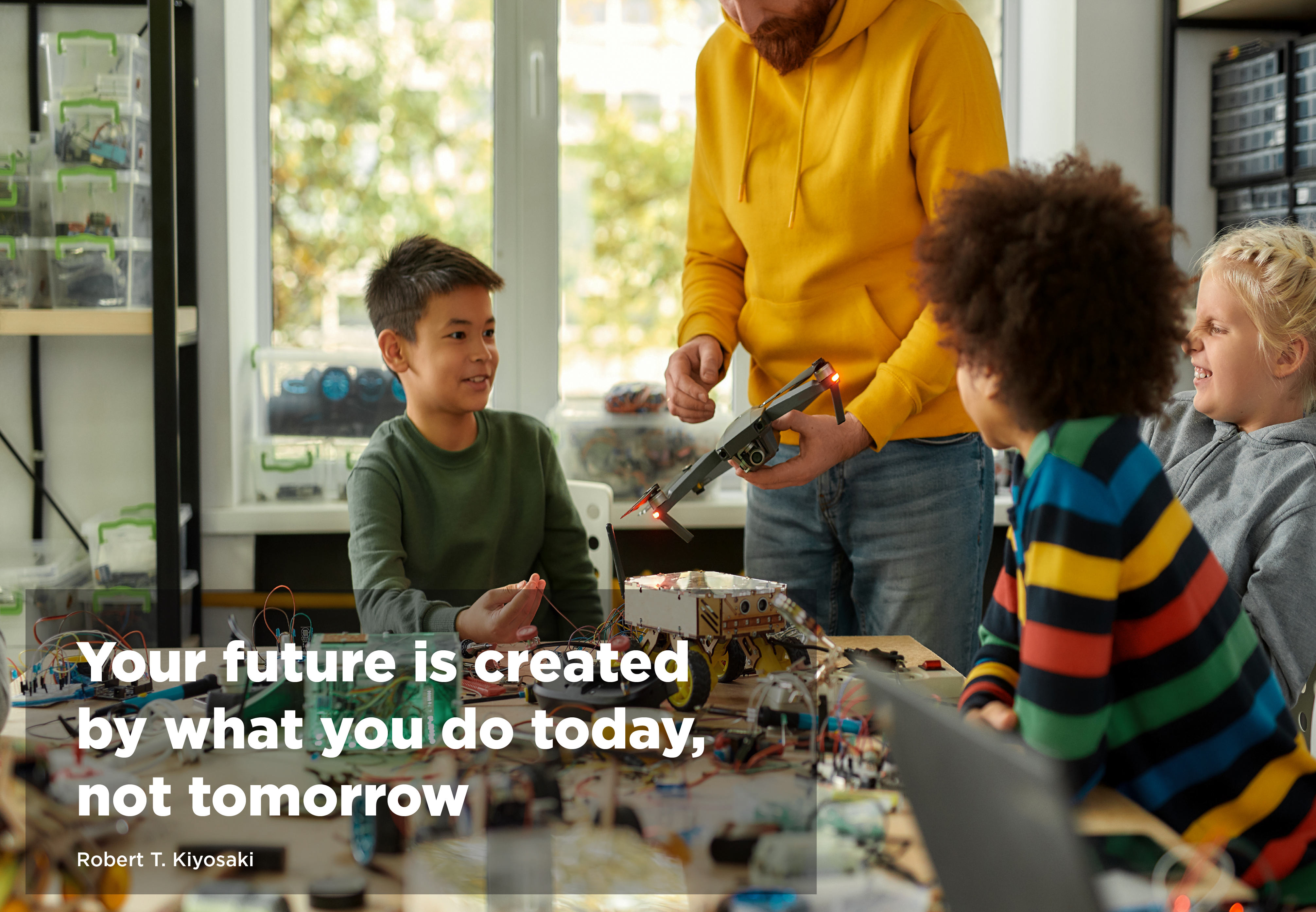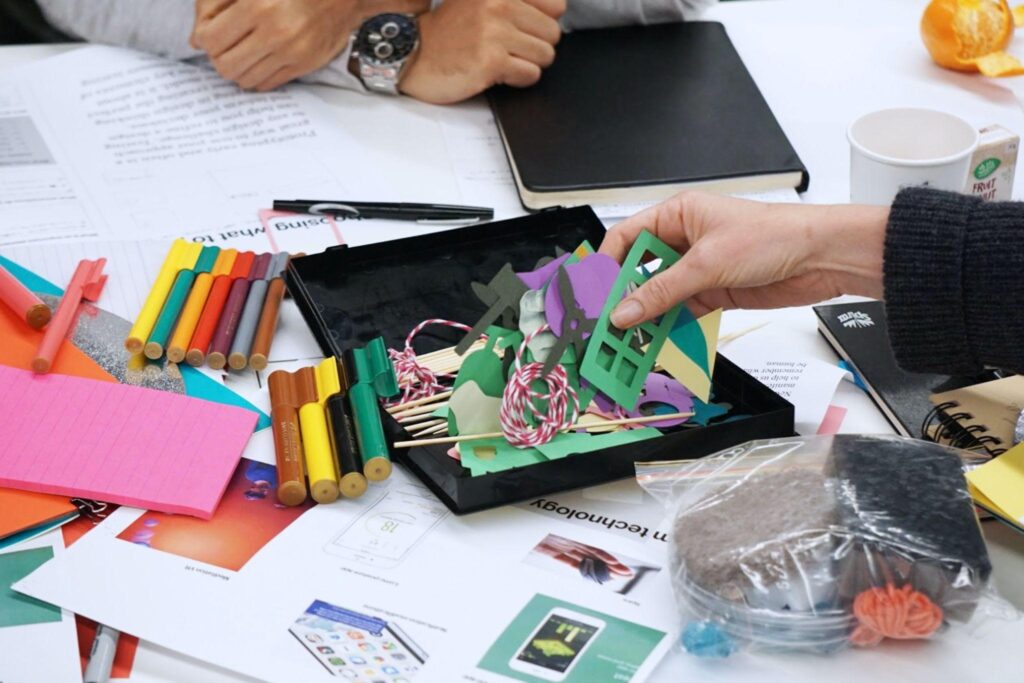Main Menu


Help Students Find Fulfilling Careers through STEM Education!
It can seem to be such an innocuous question, but behind those simple words is a decision that leads down different career paths. What students study may not be a part of their career in the future. How does the education system support its students when industry and careers are evolving at an unprecedented rate thanks to the digital age and the changing needs of our world’s population. No one can predict the jobs of the future, but we can continue to expose our students to different skills and subjects that will create a strong foundation for a future career.
STEM education provides students with the opportunity to develop a range of skills within a number of different subjects. We can’t tell them what to be but we can show them how they can be a part of the rapidly evolving workforce. You don’t have to be an identified STEM teacher to incorporate STEM activities into your curriculum. Here are a number of ways that you can use STEM in your classroom.
This style of learning can help students form deeper connections to content, connect ideas across disciplines, and build the questioning, thinking, and metacognitive skills needed for future careers. It allows for students to develop their strengths and share their learning with their peers.
Digital technology is no longer just a Powerpoint presentation. Immersing your lessons in different types of technology allows students to see the possibilities and also to challenge how digital technology is used. How can students use technology to enhance their learning of a particular topic or how can it demonstrate their learning?
Not every student can demonstrate their learning with text. Designing and constructing a project for the demonstration of learning expands the scope of assessment for many students.

STEM activities are heavily embedded in problem solving with open ended questions to figure out. The challenge is not necessarily getting an answer, but the path that was taken to work towards it. If one avenue is not working, can an individual or group change their thinking and move towards a different solution. Students develop the ability to adapt to new challenges and new environments while asking questions of themselves and their classmates.
Inquiry based learning is deeply entrenched in STEM education. How can you solve this problem? Is there more than one answer? Why does that occur? An employer wants their workers to have curiosity and motivation for their work. Self motivation is a strong skill in the workforce of today and tomorrow. STEM encourages a thirst for knowledge because it asks for assessment and solutions. Creating a learning environment where students want to discover more, leads to an eagerness and curiosity for their work in the future. This will also help with job satisfaction.
Decisions in industry and the workforce cannot just be based on emotion and theory, but must have data that supports the strongest results. STEM is immersed in data. Science and Geography inquiry skills challenge students to use dependable sources to support their research and development. Without the data, an answer is speculation not an end result.
When solving problems involved in STEM, students can be challenged to be imaginative and inventive. They are asked to look at the world from a different perspective. In industry, having the creativity to “think outside the box” creates new opportunities to move forward in invention and innovation.
Accuracy and communication are strong skills that are continually reinforced in STEM lessons and subjects as students complete tasks that require them to document their findings and then present them to an audience in a range of different presentation styles from oral presentations, data collections, construction and written reports.
Showing empathy for people and understanding their needs is important for helping customers and working in a team. STEM education is a collaborative effort, being able to identify and recognise how different individuals work together is an underlying skill in group work which is encouraged for STEM problem solving. Drone flying is a collaborative activity, supporting each other in flight, reassuring a team member when code doesn’t always go to plan and working together to solve a problem allows empathy to play a large role in the classroom.
STEM is using the knowledge of now to help solve the problems of tomorrow. Allowing students to experience the unknown within the safety of their learning environment will allow them to have courage in their chosen career. For example – flying drones for the first time can be intimidating, but when students are supported and reassured by a confident teacher they are more likely to try, even if those first flights don’t go to plan.
There is more than one way to use technology in a classroom and providing students with the ability to implement technology in their learning and their assessment allows them to be creative and use technology to their advantage. Embracing technology in the classroom allows students to push the boundaries of their technological experience and may even lead them to pioneer a new way of learning.
If you enjoyed this article, then you might want to read our 5 Surprising Careers with Drones and STEM Geospatial Science or for inspiration on lessons with drones then we recommend you read Drones, GIS and Bushfire Recovery
She Maps is Australia’s leading expert in drone and geospatial education.
She Maps assist schools with the purchasing of drones, school-industry created drone and geospatial teaching resources and highly supportive teacher professional development.
Ready to buy drones for your school? We are an authorised DJI reseller in Australia

Subscribe by email and never miss a blog post or announcement.

She Maps aims to bring much needed diversity and support to STEM. We do this by providing drone and geospatial programs to teachers and schools across the globe.
At She Maps we acknowledge the Traditional Custodians of Country throughout Australia and their connections to land, sea, and community. We pay our respect to their Elders past and present and extend that respect to all Aboriginal and Torres Strait Islander peoples today.
Aboriginal and Torres Strait Islander peoples are advised that this site may contain names, voices, or images of people who have passed away.
Learn the 6 Steps to Launching a Successful Drone and Geospatial Program at your School
Take our resources for a spin and join the thousands of teachers who love our ready-to-teach classroom materials. Try one of our complete units of work for free.

